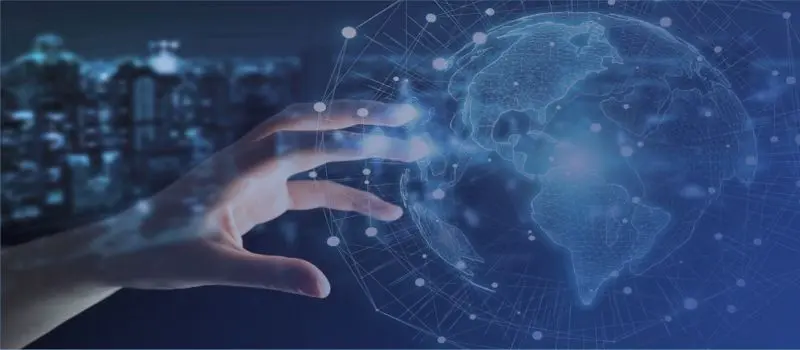
Neuromorphic Computing Market Trends, Size, Growth, CAGR Status, Demand, Future Outlook
Neuromorphic Computing Market Growth, Size, Trends Analysis - By Application, By Deployment, By Component, By End User- Regional Outlook, Competitive Strategies and Segment Forecast to 2034
| Published: Jan-2025 | Report ID: IACT2505 | Pages: 1 - 246 | Formats*: |
| Category : Information & Communications Technology | |||


- In April 2024, Intel introduced the largest neuromorphic system called Hala Point, made with Intel's Loihi 2 processor. It aims to advance research in brain-based AI and solve issues with current AI technologies. Hala Point improves significantly over the previous system, Pohoiki Springs, with over ten times more neuron capacity and about 12 times better performance, supporting up to 20 quadrillion operations per second.
- In October 2023, IBM announced that the results of its new chip architecture for neural inference, called NorthPole, were published in Science. IBM claims that NorthPole runs AI-based image recognition applications more efficiently and with lower latency than current chips, and is 4,000 times faster than the TrueNorth chip. Developed at IBM Research’s California lab, NorthPole is expected to change how advanced AI hardware systems can scale efficiently.
| Report Metric | Details |
| Market size available for years | 2021-2034 |
| Base year considered | 2024 |
| Forecast period | 2025-2034 |
| Segments covered | By Application, By Deployment, By Component, By End Use. |
| Regions covered | North America, Latin America, Asia-Pacific, Europe, and Middle East & Africa. |
| Companies Covered | Brain Corporation, CEA-Leti, General Vision Inc, Hewlett Packard Enterprise Development LP, HRL Laboratories LLC, IBM, Intel Corporation, Qualcomm Technologies Inc, SAMSUNG, Vicarious. |
- Global Neuromorphic Computing Market Size (FY’2021-FY’2034)
- Overview of Global Neuromorphic Computing Market
- Segmentation of Global Neuromorphic Computing Market By Application (Signal Processing, Image Processing, Data Processing, Object Detection and Others)
- Segmentation of Global Neuromorphic Computing Market By Deployment (Edge and Cloud)
- Segmentation of Global Neuromorphic Computing Market By Component (Hardware, Software and Services)
- Segmentation of Global Neuromorphic Computing Market By End User (Consumer Electronics, Automotive, Healthcare, Military & Defense and Others)
- Statistical Snap of Global Neuromorphic Computing Market
- Expansion Analysis of Global Neuromorphic Computing Market
- Problems and Obstacles in Global Neuromorphic Computing Market
- Competitive Landscape in the Global Neuromorphic Computing Market
- Details on Current Investment in Global Neuromorphic Computing Market
- Competitive Analysis of Global Neuromorphic Computing Market
- Prominent Players in the Global Neuromorphic Computing Market
- SWOT Analysis of Global Neuromorphic Computing Market
- Global Neuromorphic Computing Market Future Outlook and Projections (FY’2025-FY’2034)
- Recommendations from Analyst
1.1. Scope of the report1.2. Market segment analysis
2.1. Research data source
2.1.1. Secondary Data2.1.2. Primary Data2.1.3. SPERs internal database2.1.4. Premium insight from KOLs
2.2. Market size estimation
2.2.1. Top-down and Bottom-up approach
2.3. Data triangulation
4.1. Driver, Restraint, Opportunity and Challenges analysis
4.1.1. Drivers4.1.2. Restraints4.1.3. Opportunities4.1.4. Challenges
5.1. SWOT Analysis
5.1.1. Strengths5.1.2. Weaknesses5.1.3. Opportunities5.1.4. Threats
5.2. PESTEL Analysis
5.2.1. Political Landscape5.2.2. Economic Landscape5.2.3. Social Landscape5.2.4. Technological Landscape5.2.5. Environmental Landscape5.2.6. Legal Landscape
5.3. PORTERs Five Forces
5.3.1. Bargaining power of suppliers5.3.2. Bargaining power of buyers5.3.3. Threat of Substitute5.3.4. Threat of new entrant5.3.5. Competitive rivalry
5.4. Heat Map Analysis
6.1. Global Neuromorphic Computing Market Manufacturing Base Distribution, Sales Area, Product Type6.2. Mergers & Acquisitions, Partnerships, Product Launch, and Collaboration in Global Neuromorphic Computing Market
7.1. Signal Processing7.2. Image Processing7.3. Data Processing7.4. Object Detection7.5. Others
8.1. Edge8.2. Cloud
9.1. Hardware9.2. Software9.3. Services
10.1. Consumer Electronics10.2. Automotive10.3. Healthcare10.4. Military & Defense10.5. Others
11.1. Global Neuromorphic Computing Market Size and Market Share
12.1. Asia-Pacific
12.1.1. Australia12.1.2. China12.1.3. India12.1.4. Japan12.1.5. South Korea12.1.6. Rest of Asia-Pacific
12.2. Europe
12.2.1. France12.2.2. Germany12.2.3. Italy12.2.4. Spain12.2.5. United Kingdom12.2.6. Rest of Europe
12.3. Middle East and Africa
12.3.1. Kingdom of Saudi Arabia12.3.2. United Arab Emirates12.3.3. Qatar12.3.4. South Africa12.3.5. Egypt12.3.6. Morocco12.3.7. Nigeria12.3.8. Rest of Middle-East and Africa
12.4. North America
12.4.1. Canada12.4.2. Mexico12.4.3. United States
12.5. Latin America
12.5.1. Argentina12.5.2. Brazil12.5.3. Rest of Latin America
13.1. Brain Corporation
13.1.1. Company details13.1.2. Financial outlook13.1.3. Product summary13.1.4. Recent developments
13.2. CEA-Leti
13.2.1. Company details13.2.2. Financial outlook13.2.3. Product summary13.2.4. Recent developments
13.3. General Vision Inc
13.3.1. Company details13.3.2. Financial outlook13.3.3. Product summary13.3.4. Recent developments
13.4. Hewlett Packard Enterprise Development LP
13.4.1. Company details13.4.2. Financial outlook13.4.3. Product summary13.4.4. Recent developments
13.5. HRL Laboratories LLC
13.5.1. Company details13.5.2. Financial outlook13.5.3. Product summary13.5.4. Recent developments
13.6. IBM
13.6.1. Company details13.6.2. Financial outlook13.6.3. Product summary13.6.4. Recent developments
13.7. Intel Corporation
13.7.1. Company details13.7.2. Financial outlook13.7.3. Product summary13.7.4. Recent developments
13.8. Qualcomm Technologies Inc
13.8.1. Company details13.8.2. Financial outlook13.8.3. Product summary13.8.4. Recent developments
13.9. SAMSUNG
13.9.1. Company details13.9.2. Financial outlook13.9.3. Product summary13.9.4. Recent developments
13.10. Vicarious
13.10.1. Company details13.10.2. Financial outlook13.10.3. Product summary13.10.4. Recent developments
13.11. Others
SPER Market Research’s methodology uses great emphasis on primary research to ensure that the market intelligence insights are up to date, reliable and accurate. Primary interviews are done with players involved in each phase of a supply chain to analyze the market forecasting. The secondary research method is used to help you fully understand how the future markets and the spending patterns look likes.
The report is based on in-depth qualitative and quantitative analysis of the Product Market. The quantitative analysis involves the application of various projection and sampling techniques. The qualitative analysis involves primary interviews, surveys, and vendor briefings. The data gathered as a result of these processes are validated through experts opinion. Our research methodology entails an ideal mixture of primary and secondary initiatives.
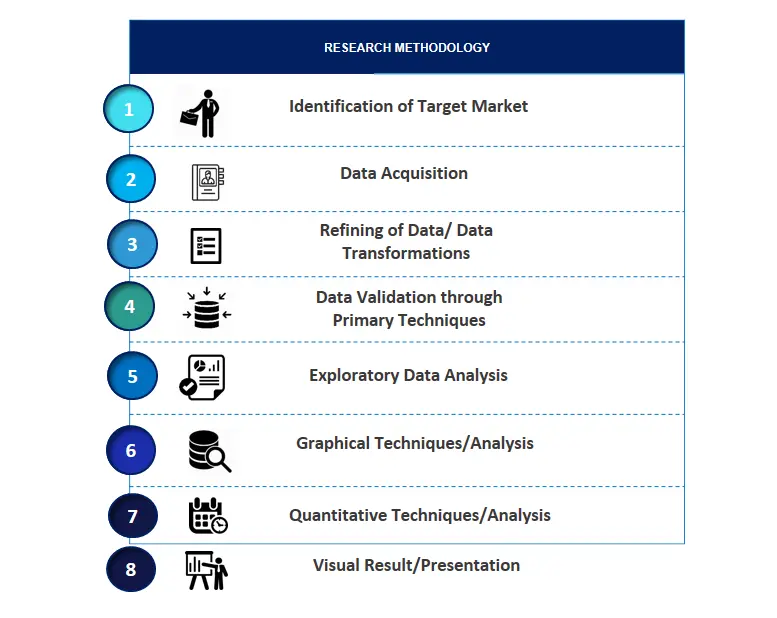
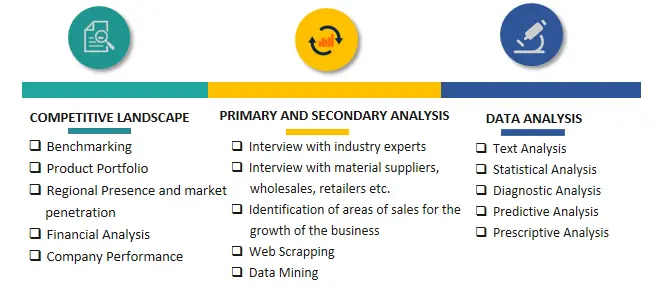

Frequently Asked Questions About This Report
PLACE AN ORDER
Year End Discount
Sample Report
Pre-Purchase Inquiry
NEED CUSTOMIZATION?
Request CustomizationCALL OR EMAIL US
100% Secure Payment
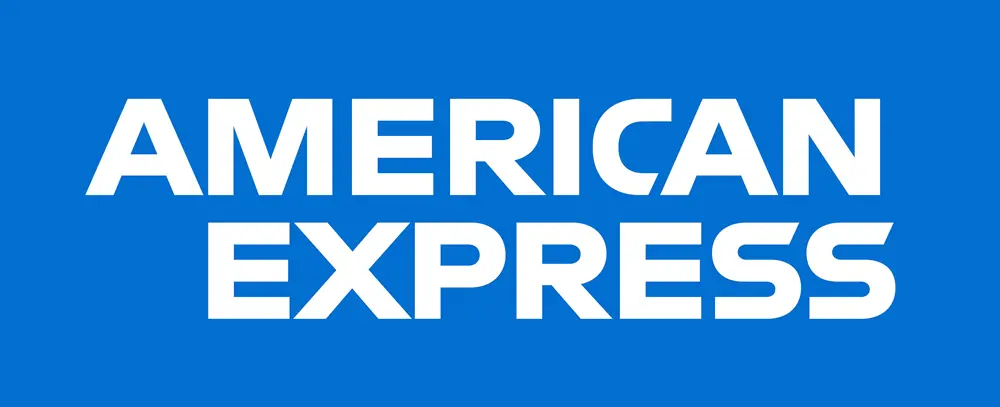


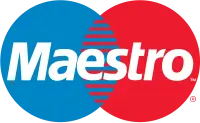


Related Reports
Our Global Clients
Our data-driven insights have influenced the strategy of 200+ reputed companies across the globe.


